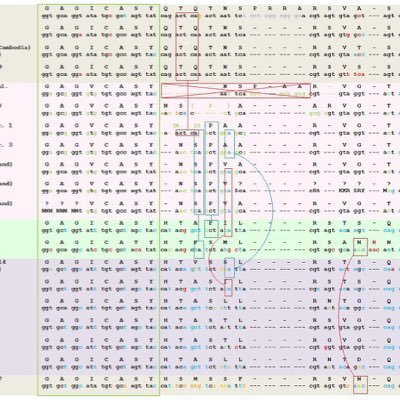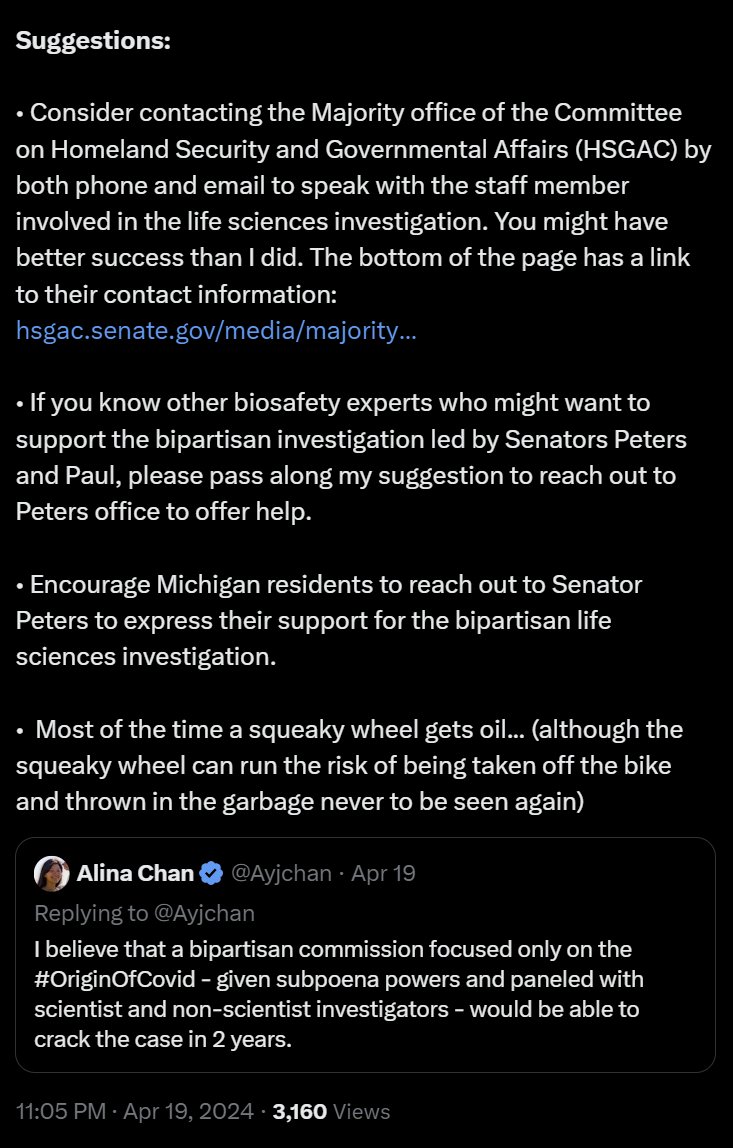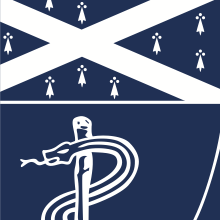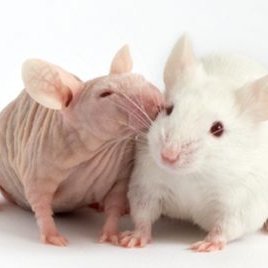Alina Chan @Ayjchan
Scientific Advisor at Broad Institute of MIT & Harvard 🧬 Co-author of VIRAL: the search for the origin of Covid-19 📖 A dangerous young investigator 🕵🏻♀ Cambridge, MA Joined December 2011-
Tweets22K
-
Followers72K
-
Following563
-
Likes15K
1/A year ago, Chinese scientists published data from samples collected at a Wuhan market at the heart of the COVID outbreak - startling many, given it happened years ago. Then the data got retracted. @mylcheng and I tried to find out why. Our findings: apnews.com/article/china-…
“There were no real reforms, because doing reforms means admitting fault,” said a public health expert in contact with Chinese health officials. #OriginOfCovid apnews.com/article/china-…
Sobering reporting what Chinese scientists and dissident face: their children taken away if they say things authorities dislike. This is why it’s understandable that they may parrot the official line on anything sensitive — and their personal communications are monitored.
Sobering reporting what Chinese scientists and dissident face: their children taken away if they say things authorities dislike. This is why it’s understandable that they may parrot the official line on anything sensitive — and their personal communications are monitored.

Richard H. Ebright @R_H_Ebright
70K Followers 283 Following Board of Governors Professor of Chemistry and Chemical Biology @RutgersU @BiosafetyNow
Matt Ridley @mattwridley
128K Followers 3K Following Biologist | Author of Red Queen, Genome, Rational Optimist, and Viral: The Search for the #OriginOfCovid: https://t.co/wHGfoouaqx
Alex Washburne @WashburneAlex
30K Followers 3K Following Deaf guy, great listener! Princeton PhD Math/Stats/Bio/Finance Opinions my own 👌🤓
Alexandros Marinos �.. @alexandrosM
59K Followers 997 Following Wannabe practical philosopher. Founded https://t.co/RmDxQ7Ka0d, currently working on $NEWTHING #OCCUPYUNIVERSE
Kevin McKernan @Kevin_McKernan
80K Followers 3K Following Cannabis Genome Project,2011. Developed the SOLiD sequencer. R&D lead Human Genome Project at MIT/WIBR. Founder- Medicinal Genomics
Jamie Metzl @JamieMetzl
63K Followers 14K Following https://t.co/M3eSpDEAUu Founder • Futurist • #Superconvergence #HackingDarwin #EternalSonata author • @AtlanticCouncil • Fmr NSC, State, UN, @WHO adv committee
Tracy Høeg, MD, PhD @TracyBethHoeg
80K Followers 1K Following PhD in epi & public health |Researcher @SyddanskUni & @ucsf |PM&R doc |🇩🇰🇺🇸 dual citizen |Run, bike swim; former team 🇺🇸 runner|6 languages |🏔️views mine
Prof Francois Balloux @BallouxFrancois
148K Followers 1K Following Director @UGI_at_UCL. Interest in Infectious disease epidemiology, pathogen genomics and global health
Walter M Chesnut @Parsifaler
79K Followers 3K Following WHAT IS, IS. My research is funded by donation only. Please consider supporting my work. At: https://t.co/Hb8pYRMFxA. Or via PayPal at https://t.co/D4ah3zh0Hh
Charles Rixey, MA MBA.. @CharlesRixey
32K Followers 1K Following Researching SARS-CoV-2's origin w/ #DRASTIC - Dad/OIF Vet/Historian - USMC/DoS Weapons of Mass Destruction (WMD) professional. - secure: [email protected]
Yuri Deigin @ydeigin
26K Followers 1K Following Vitalist and longevity biotech entrepreneur developing epigenetic rejuvenation gene therapies since 2017 | DRASTIC cofounder https://t.co/jpRBlDRMg1 |🇺🇦🇨🇦
Emily Kopp @emilyakopp
24K Followers 2K Following Reporter at U.S. Right to Know. Previously led COVID-19 coverage for CQ Roll Call and did investigations for @KHNews // Reach out! [email protected]
Paul D. Thacker @thackerpd
44K Followers 1K Following Journalist; Former Investigator U.S. Senate; Former Safra Ethics Center, Harvard. https://t.co/aD6NkYzjqM
Kelley K @KelleyKga
37K Followers 1K Following Fact checking public health and the media | "Check Your Work" Substack
Igor Chudov @ichudov
37K Followers 1K Following Saving the world one Substack post at a time. Subscribe at https://t.co/xAon1BcsSU today!!!
@mbalter — investig.. @mbalter
12K Followers 8K Following Journalist/journo prof. Former Paris corresp/Science. Contributor @Truthdig. See also: https://t.co/1EBthERMGS and https://t.co/Wq88zcBEj5.
Dr. Lynn Fynn (Fan Ac.. @fynn_fan
32K Followers 931 Following Fan account for Dr. Lynn Fynn derived from and for those who love science and sarcasm. Follow her at https://t.co/Ja5CCZ11Zl GETTR: @RealDrLynnFynn
Gilles Demaneuf @gdemaneuf
7K Followers 1K Following Pointy Head. Opinions, analyses and views expressed are purely mine and should not in any way be characterised as representing any institution or company.
Pieter Borger @BorgerPieter
29K Followers 245 Following P. Borger (MSc, PhD), mol biologist, science writer, author. Defender of science, opponent of pseudoscience. https://t.co/47VTmwQSp7
Jona Walk @JonaWalk
25K Followers 574 Following Arts in opleiding tot internist | PhD | onderzoek in immunologie en infectieziekten | activist | @vierdegolf | #onverdeeldopen | live not by lies
Stuart Griffin @stuartgriff_
77 Followers 798 Following
Celeste Kenney, NCC, .. @celestial_bean_
3K Followers 5K Following @[email protected] @celestial_bean on Post ☆ Democrat • I Value Facts, Research & Science • Deconstructing / Progressive Christian 😷 Pro-Mitigation
C Bates @chkylibertarian
362 Followers 447 Following Natural resources attorney. Not your attorney. Opinions are not my own—they are merely rented.
Forager Health @MetabolicApp
17 Followers 172 Following Health and Wellness is a Human Right. Building a #functional #health #community where truths are challenged, backed by science & show real results.
Richterin Maike Raeck.. @SvelarelaMatrix
4K Followers 5K Following “L’unica istituzione italiana dove la competenza è premiata e il merito riconosciuto è il bordello”.
Fala, Will @lavemowill
78K Followers 5K Following Assuntos nacionais, internacionais e intergalácticas.
aphlyy @aphlyy
0 Followers 198 Following
🦅 @yu10885889
0 Followers 1K Following
Patrick @Patdc
1 Followers 531 Following
Ledoum @MarcLedoux14
2K Followers 5K Following Trumpster, Pro-Life, Follower of Jesus. IFB all Patriots, A1 A2 Supporter. No Porn or Crypto. MAGA 2024. Live Free or Die
John Hanley III 🦉�.. @TheGoodLife555
199 Followers 998 Following Live and love, fight and rebel! Cooperation is key! Infj-t
stu @YolkCapitol
252 Followers 229 Following
Kari Telaranta 🌊�.. @KariTelaranta
1K Followers 2K Following Johtava asiantuntija | Chief Advisor @SPEK_ry Doctoral Researcher @MAB_Tampereuni. Fire safety, continuity and human rights. Tulessa vain totuus säästyy.
LabRatty @LabRatty579694
59 Followers 440 Following
燕生 @5PG17ZHZzK3mtQT
55 Followers 58 Following
Mike Senn @SennMike
479 Followers 2K Following Father, husband, veterinarian, KSU alum, ISU alum, KSU parent
Feathercraft079 @feathercraft079
372 Followers 202 Following
Jean Paul de Kervor @JP2Kervor
155 Followers 685 Following Married father of 3 - Surfer, chemist, international business consultant, Mba, Mexican- French- Armenian American libertarian ecologist. 4 nuclear power.
Dr. Dilkash Rana @RanaDilkash
308 Followers 5K Following
Florin Hilbay @fthilbay
103K Followers 698 Following Solicitor General, Rep of the Philippines (2014-2016); Dean, Silliman University College of Law; Author, Bitcoin: An Introduction.
Jimdotcom @jah_blesssssss
236 Followers 555 Following lover of life, liberty & the pursuit of happiness. Holding a raw-vision for real human connection. Face free and Un-injected.
Laura @laura_pimpin
4 Followers 106 Following
Pauline Bertrand @PopBertrand
495 Followers 3K Following Policy Analyst at @OECD working on #integrity #anticorruption #lobbying #foreigninfluence. @sciencespo alumni. Sports fan & football lover. ♡/RTs ≠ endorsement
Erin McCann @compassionplusb
140 Followers 1K Following Founder/CEO, C+B® Compassionate + Beneficial Mgmt™. Animal welfare+human well-being. Ethical research. Sustainable foods. Neurodivergent+Disability+Bi🌈
TheFelineCynic @Zaxon551
762 Followers 2K Following Let it go Cat Man, resist, keep scrolling. Leave the demons alone. Let them have their delusions. The Ukraine flag has become a symbol of stupidity.
dan.grigoriu @Danutz10821
2 Followers 83 Following
Krumhunger @Krumhunger1
149 Followers 366 Following "When the communication device merges with the information device, and shrinks to the size of a wristwatch, government will be obsolete." - R.B. Fuller (attrib)
Fedelynn M. Jemena @FMJemena
346 Followers 765 Following Bookworm, writer, artist, BBC Sherlock, Supernatural, 00Q fan, Filipina Golden Girl. Fictional BFs: Whishaw, Freeman, Craig. FMJemena2 on AO3
Eoin MacMahon @eoin_macmahon
131 Followers 462 Following
Boadicea @woadismeRN
326 Followers 1K Following 2+2=4 As Voltaire put it many years ago: "those who can make you believe absurdities, can make you commit atrocities.”
WiscBadger66 @WIBadger66
86 Followers 238 Following
Ignacio Comes 🇪�.. @ComesIgnacio
899 Followers 4K Following Abogado penalista. Doctor en Derecho. Prof. Asociado de Derecho Penal de la Universidad de Valencia. ¿Cómo lo haría Lubitsch? https://t.co/G3sFt29jN1
Mike Penceo @MPenceo76196
7 Followers 142 Following Husband, father, Grandfather, Christina, Conservative, Republican - In That Order, 48th Vice President 🇺🇸
DarkbyDesign @DarkByDesign18
10 Followers 2 Following Praying to God almighty for justice and the truth. For the long haulers and 20M dead.
Jenn Dowd @drjenndowd
8K Followers 3K Following Prof. Demography & Population Health @UniofOxford @OxfordDemSci. Mortality, Epidemiology, Infections/Immunity, COVID-19. 🇺🇸 in 🇬🇧.Nerdy Girl @DearPandemic
Stanley Ray @qssw81
3 Followers 2K Following Living my best life….happiness lies within yourself so choose happiness.
Tommy Hager @tjphager
50 Followers 1K Following
BES-5 @BES_5_FNR
0 Followers 77 Following Thermoelectric appreciator. Low key user here with occasional replies and posts.
Jack Kalavritinos @Jkal1985
1K Followers 3K Following Founder, JK Strategies | former White House/HHS senior advisor | host of Capital Forum interview series
Jacktom @SonSon55436413
174 Followers 1K Following
Rick Shepherd 🇵�.. @RepRickShepherd
2K Followers 4K Following #FreePalestine #BDS #ACAB #UBI #M4A #FreeAssange #LFTR “This Is What Our Ruling Class Has Decided Will Be Normal” - Aaron Bushnell
Richard H. Ebright @R_H_Ebright
70K Followers 283 Following Board of Governors Professor of Chemistry and Chemical Biology @RutgersU @BiosafetyNow
Matt Ridley @mattwridley
128K Followers 3K Following Biologist | Author of Red Queen, Genome, Rational Optimist, and Viral: The Search for the #OriginOfCovid: https://t.co/wHGfoouaqx
Alex Washburne @WashburneAlex
30K Followers 3K Following Deaf guy, great listener! Princeton PhD Math/Stats/Bio/Finance Opinions my own 👌🤓
Alexandros Marinos �.. @alexandrosM
59K Followers 997 Following Wannabe practical philosopher. Founded https://t.co/RmDxQ7Ka0d, currently working on $NEWTHING #OCCUPYUNIVERSE
Jamie Metzl @JamieMetzl
63K Followers 14K Following https://t.co/M3eSpDEAUu Founder • Futurist • #Superconvergence #HackingDarwin #EternalSonata author • @AtlanticCouncil • Fmr NSC, State, UN, @WHO adv committee
Prof Francois Balloux @BallouxFrancois
148K Followers 1K Following Director @UGI_at_UCL. Interest in Infectious disease epidemiology, pathogen genomics and global health
Yuri Deigin @ydeigin
26K Followers 1K Following Vitalist and longevity biotech entrepreneur developing epigenetic rejuvenation gene therapies since 2017 | DRASTIC cofounder https://t.co/jpRBlDRMg1 |🇺🇦🇨🇦
Emily Kopp @emilyakopp
24K Followers 2K Following Reporter at U.S. Right to Know. Previously led COVID-19 coverage for CQ Roll Call and did investigations for @KHNews // Reach out! [email protected]
Paul D. Thacker @thackerpd
44K Followers 1K Following Journalist; Former Investigator U.S. Senate; Former Safra Ethics Center, Harvard. https://t.co/aD6NkYzjqM
@mbalter — investig.. @mbalter
12K Followers 8K Following Journalist/journo prof. Former Paris corresp/Science. Contributor @Truthdig. See also: https://t.co/1EBthERMGS and https://t.co/Wq88zcBEj5.
Gilles Demaneuf @gdemaneuf
7K Followers 1K Following Pointy Head. Opinions, analyses and views expressed are purely mine and should not in any way be characterised as representing any institution or company.
Bryce Nickels @Bryce_Nickels
6K Followers 163 Following Professor of Genetics, Rutgers University; co-founder of @BiosafetyNow; #RetractProximalOrigins; #TeamTruth
Louis R Nemzer @BiophysicsFL
4K Followers 3K Following Professor at Nova Southeastern University. Antibiotic Resistance, Agent-Based Models, Seizure Prediction, Information Entropy of DNA
WhatsInWuchang @InWuchang
2K Followers 719 Following Curious about what's in Wuchang https://t.co/Qv7nUEJweE
Gary Ruskin @garyruskin
20K Followers 2K Following executive director, @USRightToKnow, working to expose corporate wrongdoing and government failures threatening our health, food and environment.
The Honest Broker @RogerPielkeJr
46K Followers 7K Following undisciplined scholar, recovering academic | @AEI | Honorary Professor @UCL | The Honest Broker ➡️ https://t.co/f7iRjp2ClM
Bloom Lab @jbloom_lab
48K Followers 1K Following Lab studying molecular evolution of proteins and viruses. Affiliated with @fredhutch @HHMINEWS @uwgenome. @jbloomlab@bsky
Monali C. Rahalkar @MonaRahalkar
8K Followers 306 Following Scientist in the area of methane mitigation, climate change. Investigating the truth about covid-19 virus origins. Tweeting in my personal capacity.
MJ Allen @MJnanostretch
4K Followers 671 Following Founder at Biometrology. Nanobiologist, scanning probe microscopist. Frmr research scientist: US Dept of Energy, Digital Instruments, Univ of Chicago faculty.
Jocelyn Kaiser @jocelynkaiser
1K Followers 57 Following I'm a reporter covering NIH and biomedical research policy for Science magazine.
stephen lagana @stephen_lagana
1K Followers 447 Following Pathologist, investing geek, beer aficianado.
Hon Prof Colin D Butl.. @ColinDavdButler
3K Followers 2K Following Epidemiologist; "1 of 100 drs for the planet" (2009), co-ed: Climate Change & Global Health; Biosafety Now!, MD equiv, PhD; Australian Nat'l Univ, own opinions
Dr. rer. nat. Valenti.. @VBruttel
6K Followers 576 Following currently not active on twitter/X father, scientist, bioengineer, immunologist. CSO Toleris Biotherapeutics. private account. supporter https://t.co/BSBx7WXTKB
Jim Edwards @Jim_Edwards
19K Followers 4K Following Editor-in-chief at Moneyin2. Formerly: Editor-in-chief for News at Business Insider. Also the author of Say Thank You for Everything. jim (at) https://t.co/LHBdrc1Le5
U.S. Right To Know @USRightToKnow
19K Followers 2K Following Investigative public health group working globally to expose corporate wrongdoing and government failures threatening our food, environment and health.
John Ratcliffe @JohnRatcliffe
517K Followers 954 Following The nation’s top intelligence official as the 6th Director of National Intelligence of the United States. Former Member of Congress and U.S. Attorney for Texas.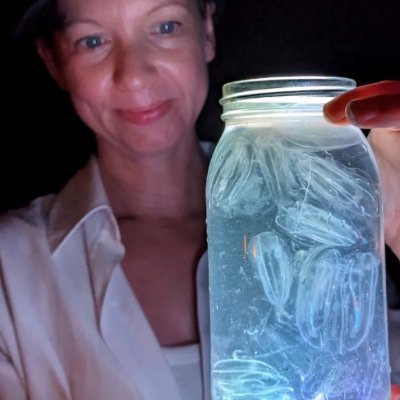
sarahknapton🐳 @sarahknapton
15K Followers 3K Following 🐳 Science Editor at The Daily Telegraph/Sunday Telegraph/ https://t.co/RB5yXED4Tg [email protected]
Jonathan Haidt @JonHaidt
410K Followers 2K Following Social psychologist at NYU-Stern, working to roll back the phone-based childhood. Please visit https://t.co/ZjBuXdDr8I & https://t.co/7aVAmOTlnl
RADM Kenneth Bernard,.. @RADMKenBernard
505 Followers 353 Following USPHS (Ret). Biodefense & health security expert. Former Special Assistant to Presidents George W Bush, @BillClinton, Political Advisor to Director General @WHO
Alexander Nguyen @AlexNguyen_EIT
6 Followers 229 Following
Jonathan Calvert @JCalvertST
9K Followers 629 Following Editor of @thesundaytimes Insight investigations team. Four-time Scoop of the Year winner. Author of Failures of State and The Ugly Game.
Anton van der Merwe @vdmerwex
146 Followers 86 Following I am a scientist studying molecular immunology
The Scandal Mongers P.. @MongersPodcast
3K Followers 4K Following Join bestselling author @andrewlownie & lifelong friend, filmmaker & writer @philmcraig, as they reveal the greatest scandals of all time. On YouTube/ApplePods.
Mayra Ameneiros @MayraAmen
839 Followers 1K Following @IBBIS_bio Senior Fellow/@WHO HSI-TAG/@nextgenghs Board of Directors/Fellow 22': ELBI @JHSPH_CHS & ACONA @Harvard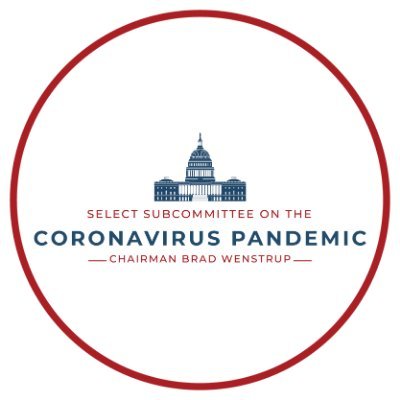
Select Subcommittee o.. @COVIDSelect
36K Followers 362 Following Select Subcommittee on the Coronavirus Pandemic | Est. 2023 | Chairman @RepBradWenstrup
Biosafety Now! @BiosafetyNow
5K Followers 117 Following US-based NGO working for a future where scientific research on pathogens supports human life without also threatening it & public trust in science is restored.
Jérémy André Flor�.. @Tantalite
7K Followers 2K Following Reporter Asie-Pacifique au magazine @lepoint. Auteur d'"Au nom de la science", chez @AlbinMichel (2023).
Karolina Corin @kccorin
939 Followers 125 Following staff scientist @USRightToKnow, academic research scientist, biological engineering PhD
Bari Weiss @bariweiss
1.0M Followers 5K Following Editor of The Free Press @thefp Host of Honestly @thehonestlypod Head of @nelliebowles fan club
Michael Shellenberger @shellenberger
1.1M Followers 846 Following Founder, Public :: Dao Journalism Award Winner :: Time, "Hero of Environment" : CBR Chair of Politics, Censorship & Free Speech @UAustinOrg : Bestselling author
Anthony Cheng @AnthonyKaChun
778 Followers 2K Following Producer @TimesRadio [email protected]. Filmmaker.
Dr. Gerald Parker @DrGerryParker
1K Followers 486 Following Associate Dean, @TAMUOneHealth, College of Veterinary Medicine & Biomedical Sciences; Director, Pandemic & Biosecurity Policy Program, @ScowcroftTAMU; @TAMU '76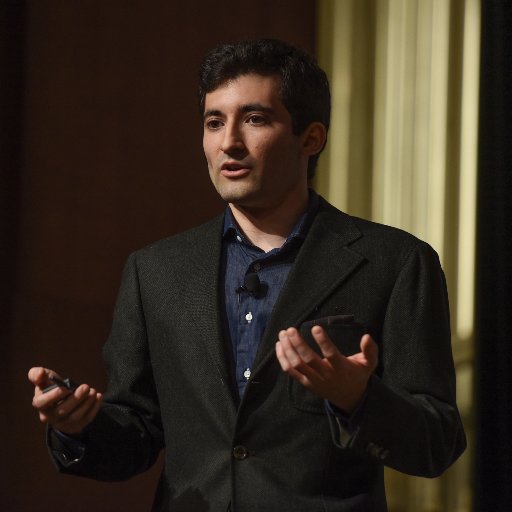
Varro Analytics 🇭�.. @Varro_Analytics
7K Followers 3K Following Focus here on economics of biotech & molecular tools/diagnostics/synthetic biology space | Feb 2023 disclosure https://t.co/kuHvKZbzEV
David Wallace-Wells @dwallacewells
100K Followers 3K Following Writer @nytopinion and columnist @NYTmag. Newsletter on climate and the messy future (https://t.co/CPCd2nw3Kx). Author of The Uninhabitable Earth.
Megan K. Stack @Megankstack
12K Followers 4K Following Every Man In This Village Is A Liar WOMEN’S WORK writer @nytopinion, once J'lem-Cairo-Moscow-B'jing @latimes;TX @AP etc
Jeremy R. Hammond @jeremyrhammond
14K Followers 1K Following I expose mainstream propaganda serving to manufacture consent for criminal government policies. Sign up for my newsletter at https://t.co/SXDeKWjEKL.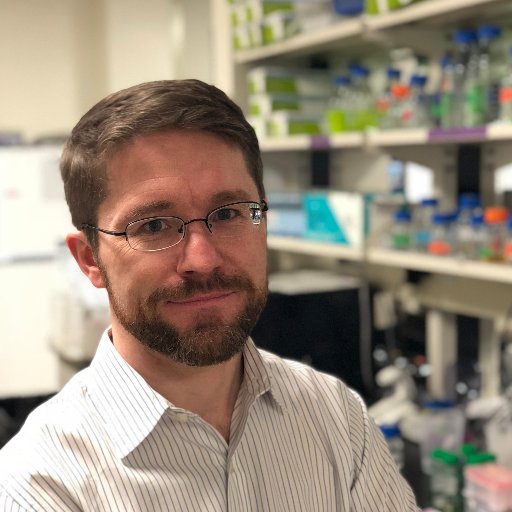
Shaun Mahony @mahonylab
2K Followers 1K Following Studying gene regulation and transcription factor binding specificity with machine learning. Assoc Prof @ Penn State. 🇮🇪
Dr. Miller-Meeks @millermeeks
14K Followers 3K Following Doctor. Veteran. Public Health Official. #FightForIowa. #NeverQuit #ia01
Adam Livingstone @adamlivingst0n3
2K Followers 132 Following BBC Newsnight Senior Producer, Journalist & Video Editor. 'It gets worse before it gets worse.'
Katherine Yon Ebright @EbrightYon
921 Followers 735 Following Counsel @BrennanCenter, formerly @PILPG, views my own | A big law nerd, not a biglaw nerd | Columbia Law '18 | Harvard College '15 | https://t.co/GwNtrA3J8v
Prof Peter Collignon @CollignonPeter
14K Followers 374 Following Infectious Diseases Physician and Microbiologist. Professor Medical School. Australian National University. Views are my own.
𝕁𝕠𝕤𝕙 𝕊.. @joshzepps
46K Followers 2K Following Broadcaster. UTS Professional Fellow. Sign up for the good stuff at https://t.co/8CufDa2nZt. Apple https://t.co/sBf2RnqPGP Spotify https://t.co/Uxe9AQyTCn
Amir Attaran (@AmirAt.. @profamirattaran
14K Followers 183 Following Professor. Litigator. Scientist. Bicyclist. Husband. Father. Son. Wrecks grifters, anti-vaxxers & scientific illiterates. Personal account (not @uOttawa).
Rep. Frank Pallone @FrankPallone
54K Followers 3K Following The official Twitter account of Congressman Frank Pallone, Jr. (D) of New Jersey's 6th Congressional District, Ranking Member of @EnergyCommerce.
Renee Wegrzyn @rwegrzyn
4K Followers 2K Following Inaugural Director, Advanced Research Projects Agency for Health
Jacob Eliosoff @JaEsf
4K Followers 731 Following #Ethereum #Bitcoin @usmfum #PrincipleOfCharity #EffectiveAltruism but even if you think I'm awesome I wouldn't follow me unless you're interested in crypto
Sergei Pond @sergeilkp
2K Followers 674 Following Dad. Husband. Born/raised Kyiv. Developer of @hyphy_software. Former mathematician, current professor of biology at Temple U. Google scholar: https://t.co/qyzpbkE1qZ
Elon Musk @elonmusk
181.3M Followers 584 Following
Claudia Rowan @claudiarowan
3K Followers 2K Following commissioning editor, travel @thetimes [email protected]
Kashif Pirzada, MD @KashPrime
45K Followers 4K Following Emergency Physician, fighter of misfortune and disease; and better indoor air quality w/ @theRavenApp. Can code (badly). Into history/politics/tech/AI. #fella
Sarah Haider 👾 @SarahTheHaider
129K Followers 645 Following "a proto-AI let out of the box too early"
US Rep Brendan Boyle @RepBrendanBoyle
60K Followers 4K Following Congressman from Philly. Ranking Member, Budget Cmte. Proud Dad to Abby & husband to Jenny. Notre Dame & Harvard alum. Diehard Philly sports fan.
Eric Schmidt @ericschmidt
2.2M Followers 223 Following Former Executive Chairman & CEO and tweets from Schmidt Foundation
Bulletin of the Atomi.. @BulletinAtomic
76K Followers 21K Following Providing news on nuclear risk, climate change, and disruptive technologies. IT IS 90 SECONDS TO MIDNIGHT. Receive updates: https://t.co/oxjCouH59rTHIS. I welcome a conversation with the new @WHO chief scientist @JeremyFarrar about his recent statements that @WHO had no idea about the FACT #COVIDIsAirborne until now. Please DM or email me @JeremyFarrar.
Also, Dr Swimanathan (ex WHO Chief Scientist) admitted after she left that WHO's failure to acknowledge and address airborne transmission of SARS-CoV-2 early in the pandemic was its BIGGEST MISTAKE. Something very fishy here.
29/And now, research into the origins of the virus is in a deep freeze. Some scientists to this day are barred from leaving China or are warned not to publish. As a result, many stay far from the subject. apnews.com/article/china-…
28/But what our story does show is that to divert blame, politicians - such as Liang, China's Foreign Ministry, and others - sidelined scientists and promoted conspiracies that undercut China's credibility, damaged scientific collaboration, and fueled lab leak speculation.
In detailing “heavy pressure” that continues to be exerted on Chinese scientists, @AP reveals that former China CDC director George Gao “was investigated after U.S. President Joe Biden ordered a review of COVID-19 data, and again after giving interviews on the virus origins.”
As some may know I have had a bit of a rough month or so health wise - today is my first day going for a real walk in a while. Nature is such great therapy. Thank you #yolobypass
WHO is doubling down with new chief scientist Jeremy Farrar continuing their attempts to cover up their denial of AIRBORNE transmission campaign and their failure to ulitise science to stop a pandemic. Sickening and frankly disrespectful to the millions that died unnecessarily,…
7) Recall, the stakes here are huge. The refusal to accept airborne transmission in 2020 cost"an enormous number of lives" (in the words of WHO Chief Scientist Jeremy Farrar). There are *immense* liability COIs here if #COVIDIsAirborne. (spoiler: it is) x.com/mark_ungrin/st…
When you’re so committed to a single possible origin for SARS-CoV-2 that you think others keeping an open mind indicates they are the dogmatic ones.
@ggronvall @zeynep @alisonannyoung @kprather88 @natashaloder @NateSilver538 @joshrogin The Chinese authorities who did the search have repeatedly made clear how biased the search was towards the Huanan market doi.org/10.1128/mbio.0…
@ggronvall @zeynep @alisonannyoung @kprather88 @natashaloder @NateSilver538 @joshrogin lol lmao This claim is flagrantly false, as you (and Holmes) know
Important message from @Bryce_Nickels: Please consider contacting Sen. Peters to express support for the bipartisan investigation into COVID origins and biosafety!
@RyanMarino @Ayjchan Love and respect your account, but I kinda have to concede this one. I used to staunchly believe in the wet market theory but I think lab leak may be more likely now sadly. Like all things covid I hate how politicized this has become. Am pro mask, pro vaccine fwiw.
Please count me in with you and @trishgreenhalgh, @kprather88. A takeaway from the past four years is that clear, correct, and simple messaging is hugely important. @WHO continues to struggle on all three fronts. None of this is rocket science.
Does anyone in the media question why me and @trishgreenhalgh both stepped away from @WHO and their new messaging of #COVIDIsAirborne?
@CorsIAQ @trishgreenhalgh @WHO It makes zero sense to take an existing term that works perfectly (airborne) and make it more complex. I feel bad criticizing many people's hard work. But at this point, I am disappointed in @WHO who are specifically charged with helping the world in terms of public health.
2/ The report was likely the result of intense pressure on @WHO during the pandemic: - They denied that #COVIDIsAirborne on March 2020 - They finally accepted it 2 years later nature.com/articles/d4158…
@Ayjchan Let's also not forget: declassification of intel could help us. Why hasn't this happened? x.com/hawleymo/statu…
GOP Senators demand top intel official comply with law, turn over COVID origins info: ‘Try again’ foxnews.com/politics/gop-s…
@Ayjchan If there were real conspiracies, a conspiracy theory to describe the conspiracy is unnecessary.
@Ayjchan How? Accountability. Only with accountability can there be progress.
@Ayjchan @kprather88 @WHO Yes. And it would not be appropriate for them to advocate water treatment, for the same reason. It’s a contemptibly stupid position to embrace.
Very chuffed!!!
Congratulations to The #PressAwards Tabloid Feature Writer of the Year category winner Ian Birrell
YSM's @VirusesImmunity is one of two @Yale professors named to the #TIME100, @TIME’s list of the 100 most influential people in the world - a #recognition of her contributions to the global understanding of #longCOVID and post-acute #infection syndromes. time.com/6964230/akiko-…













